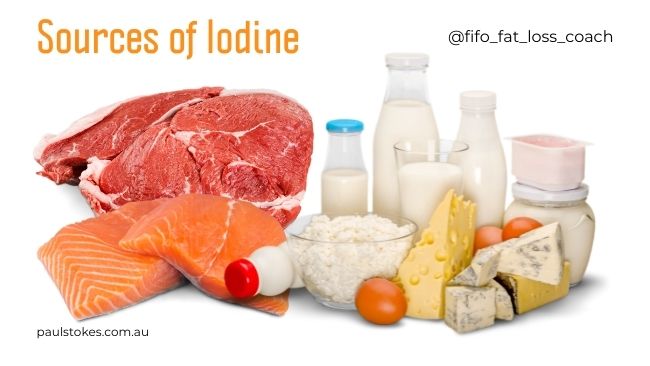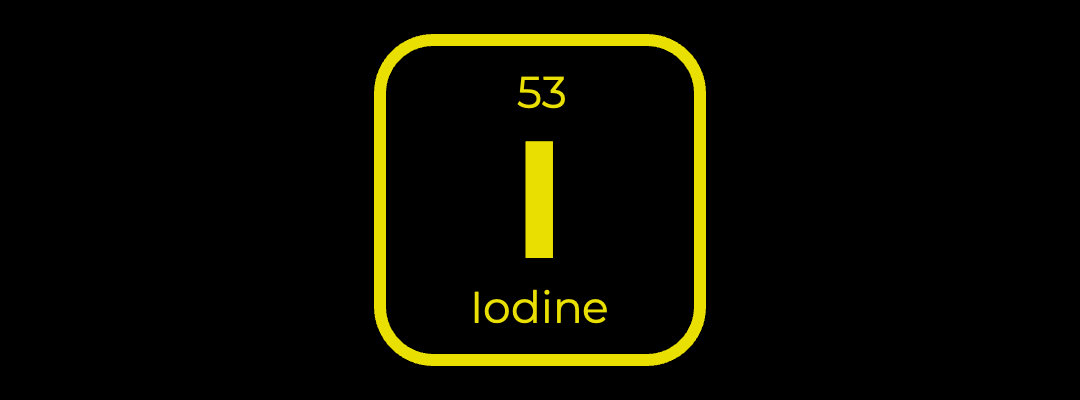Iodine has many uses. In days gone past, it was used as a surgical antiseptic. You may remember biology or chemistry lessons from school, where iodine was used as the test for the presence of starch. There are range of other commercial and industrial uses for iodine too. However, when it comes to the human body iodine has very important and specific roles. Read on to find out some interesting iodine nutrition facts.
More...
What is iodine?
You may remember back to your high school chemistry days that pure iodine forms shiny violet crystals. Unlike other minerals your body requires, iodine isn't a metal. Therefore, its chemistry within the body is rather different.
Our bodies prefer to absorb iodine in its ionic form. Metal ions your body needs, like magnesium, calcium and sodium for positive ions. Conversely, iodine forms ions that are negatively charged. These are often referred to as iodide, or iodide ions. Therefore, iodine has a special role in the body.
Nutritional benefits of iodine - why do we need it in our diet?
The average human body stores around 20-50mg of iodine. It's distributed around the muscles, thyroid gland, skin, skeleton and other endocrine glands.
Iodine's main role is to make thyroxine in the thyroid gland.
Thyroxine is a hormone that accelerates cellular reactions, increasing cellular oxidation and basal metabolic rate. As such, thyroxine plays a critical role in regulation of your metabolism. Therefore, iodine has an influence on growth, development, and differentiation.
Additionally, iodine plays a role in protein synthesis. Furthermore, your body needs iodine for brain growth and development.
How much iodine do I need from my diet?
According to the Australian Dietary Guidelines, the estimated average requirement for adults is 100µg of iodine per day. However, since iodine absorption is not 100% efficient, the recommended daily intake is a bit higher, set at 150µg.
In the United States, the recommended daily allowances set for iodine are 150µg per day for adults.
Likewise, the UK also recommends an iodine intake of 150µg per day.
Bear in mind, that these figures are for adults - men and women. Pregnant or lactating women will require more.
Iodine nutrition fact - sources of iodine and where can you find it in food?
The ocean contains vast amounts of iodine. It's hardly surprising therefore that fish and other types of seafood tend to be the very best sources. Kelp (seaweed) and sea salt too.
Eggs, milk and dairy products are also quite good sources, as are meat and poultry.
Coastal soils contain significant amounts of iodine. As a result, grains, vegetables and fruits grown in these locations will contain useful amounts.
However, in many inland areas, very little iodine is present in the soil. Consequently, crops grown here are unlikely to be reliable sources.
Many brands of table salt have iodine added as a fortification.
What happens if I don't get enough iodine from my nutrition and diet?
Long-term inadequate intake of iodine over several months can lead to a fall in thyroid hormone production. Levels of TSH (thyroid-stimulating hormone) will also increase.
The thyroid gland can become enlarged, resulting in goitre.
Additionally, iodine deficiency can lead to symptoms associated with disruption of the metabolism. These include fatigue, weakness, drowsiness, apathy and poor hair and skin condition.
Who should take the most care to maintain their iodine intake?
Pregnant and lactating women need to take special care.
Those on strict vegetarian or low-salt diets could struggle to meet their iodine requirements.
Some raw vegetable foods contain substances that can reduce the absorption of iodine. For example, cabbage, turnips, cauliflower, peanuts, broccoli, mustard greens and Brussels sprouts. As a result, high intakes of these foods could lead to a risk iodine deficiency.
Can I get too much iodine in my diet?
Yes. Excessive exposure to iodine can inhibit the function of the thyroid gland. Strangely, this can mimic symptoms of iodine deficiency.
However, excessive iodine intakes are only really likely to arise from unwarranted supplementation, not through diet.

Iodine nutrition facts - rich food sources to check if you are getting enough
As a general rule, the best sources of iodine are seafood, eggs, meat, milk and dairy products. Use the table below to see how much iodine your diet is likely to contain.
Table 1 - Iodine nutrition content of common food items
Food Item | Iodine content (µg per 100g) |
|---|---|
Abalone | 80 |
Beetroot | 0 |
Broccoli | 0 |
Brussels sprouts | 0 |
Capsicum | 0 |
Carrot | 0 |
Cauliflower | 0 |
Celery | 0 |
Egg | 57.6 |
Iodised table salt | 4400 |
Low fat vanilla yoghurt | 17.7 |
Milk chocolate with nuts | 15.8 |
Nori seaweed, dried | 2200 |
Pacific Oyster | 202 |
Prawn | 70.1 |
Red cabbage | 0 |
Rolled oats | 74 |
Sardines | 75.8 |
Scallop | 150 |
Skim Milk Powder | 200 |
Soft goat cheese | 84.3 |
Soybean paste (Miso) | 120 |
Wholemeal bread, toasted | 69.2 |
Figures supplied by Australian Food Composition Database - FSANZ

